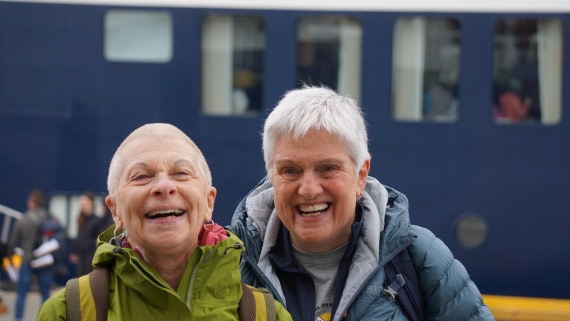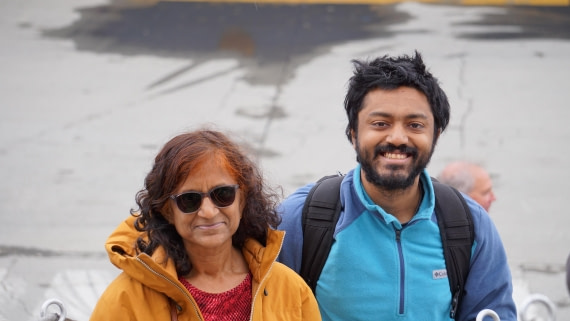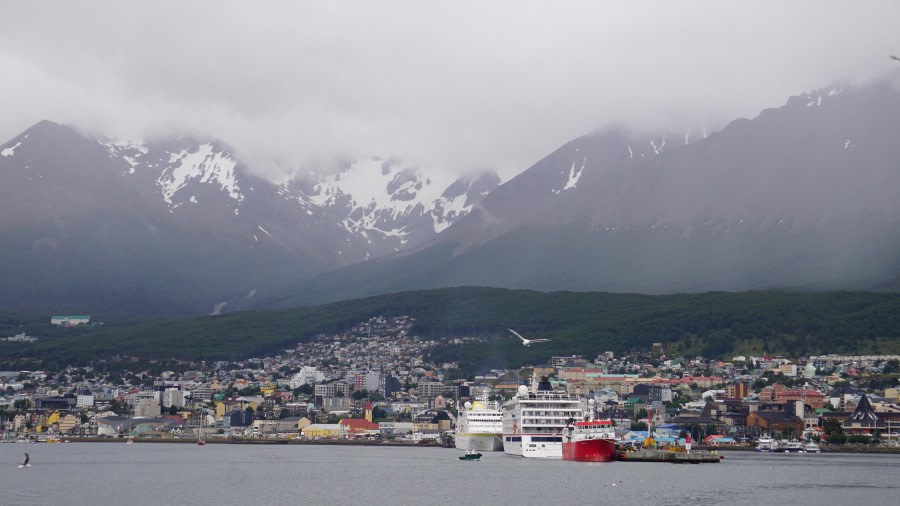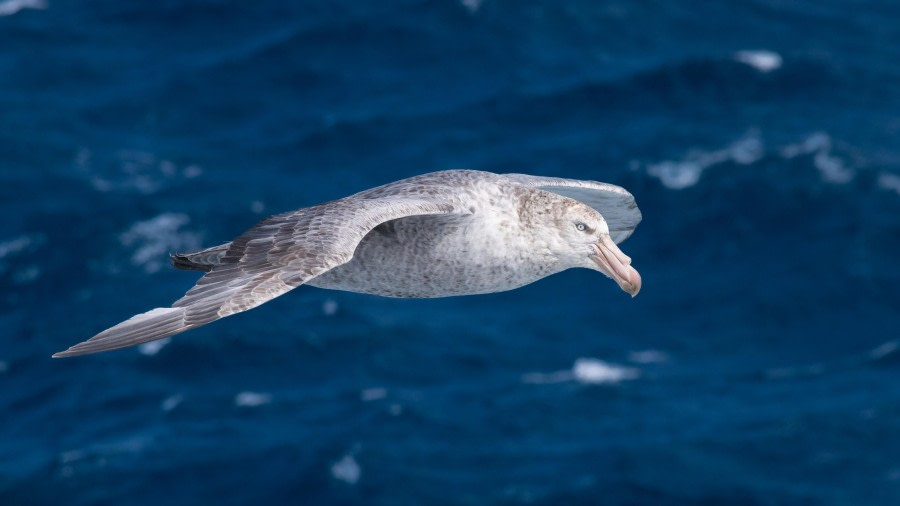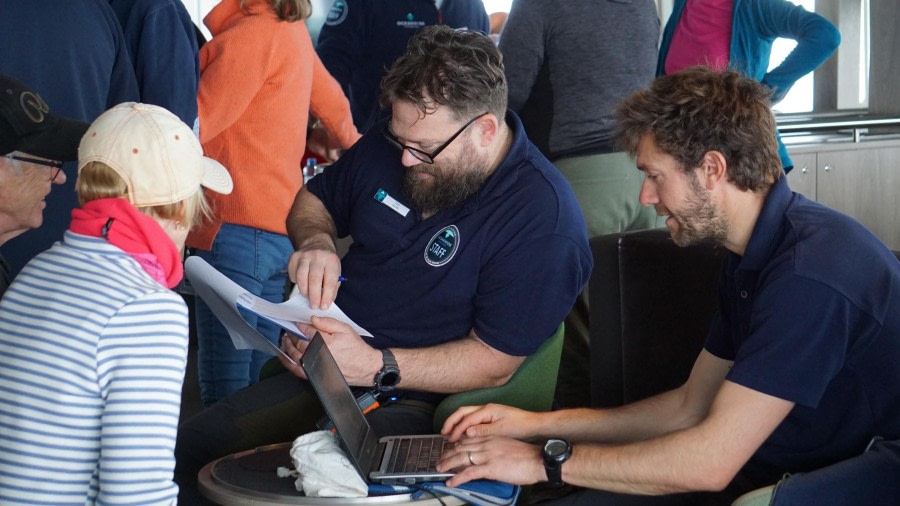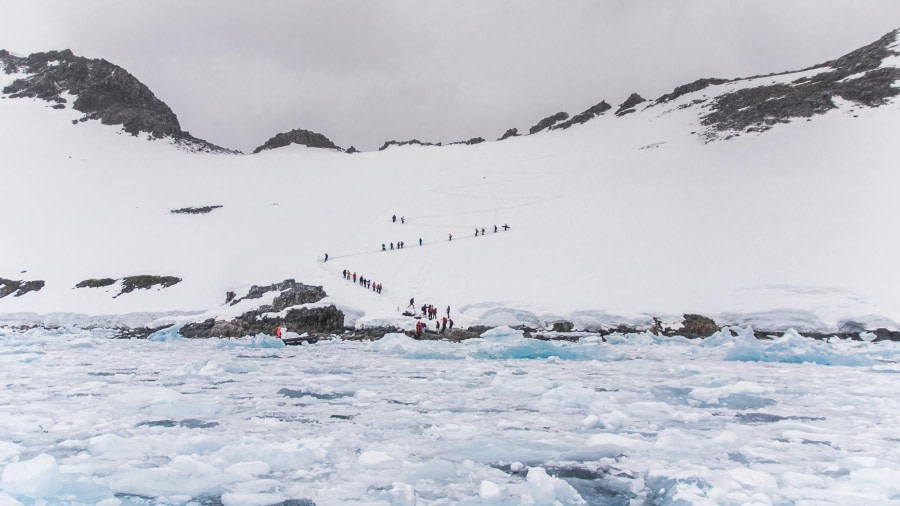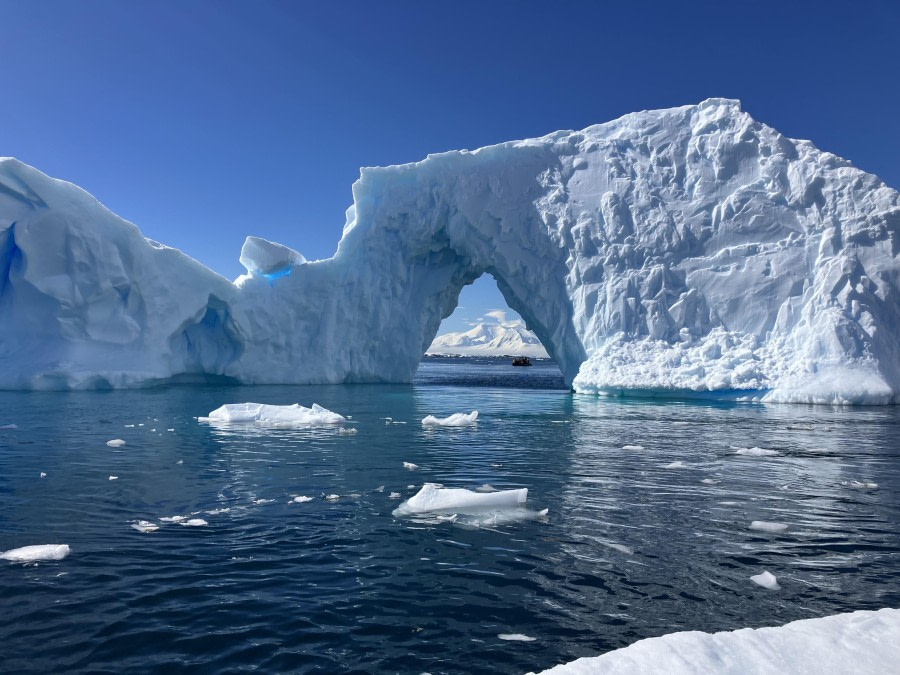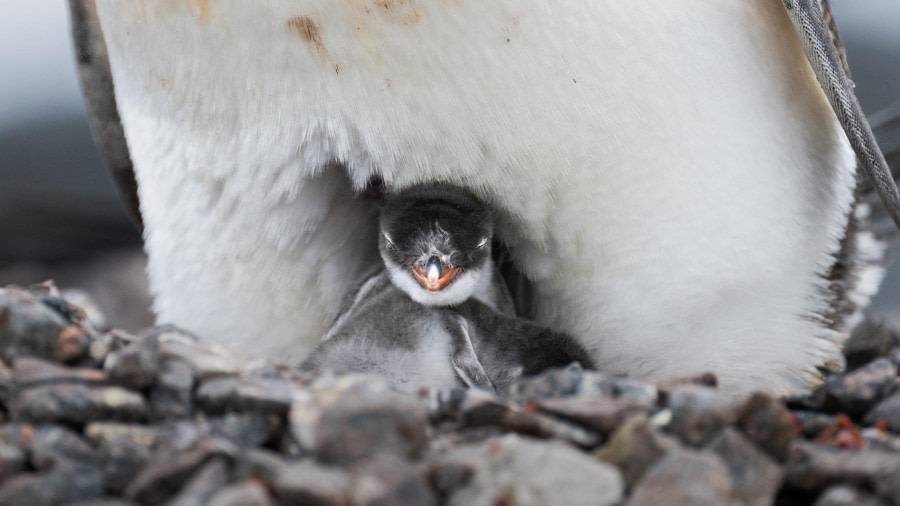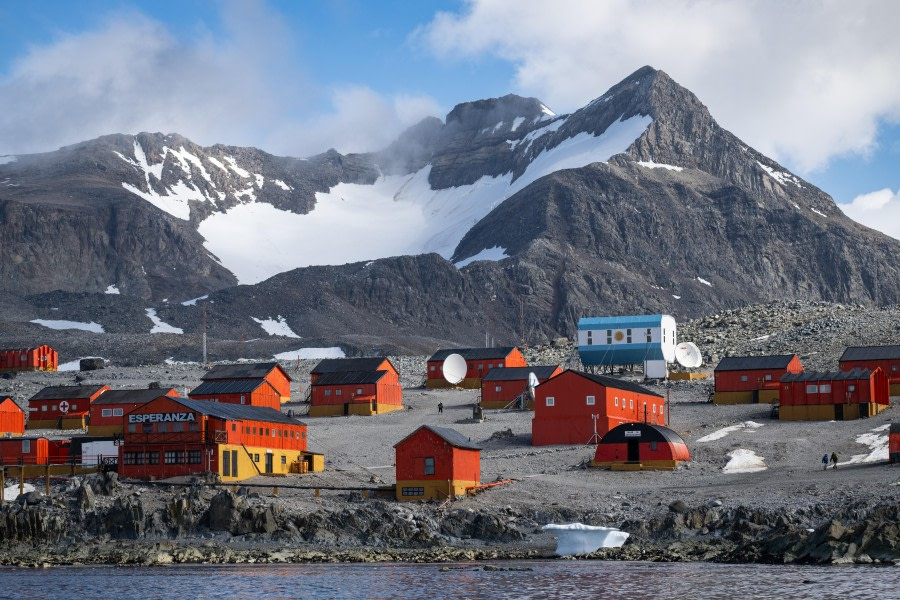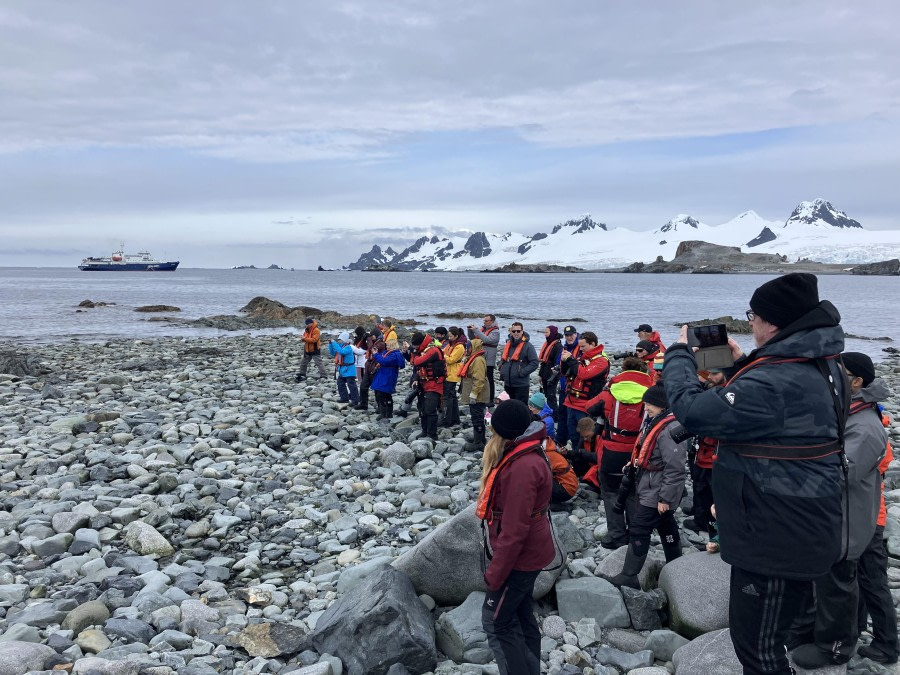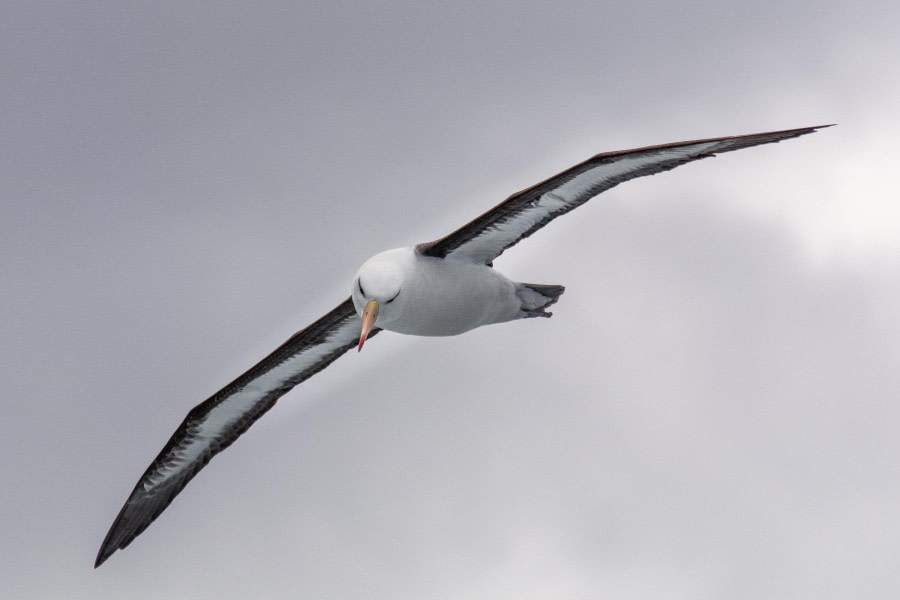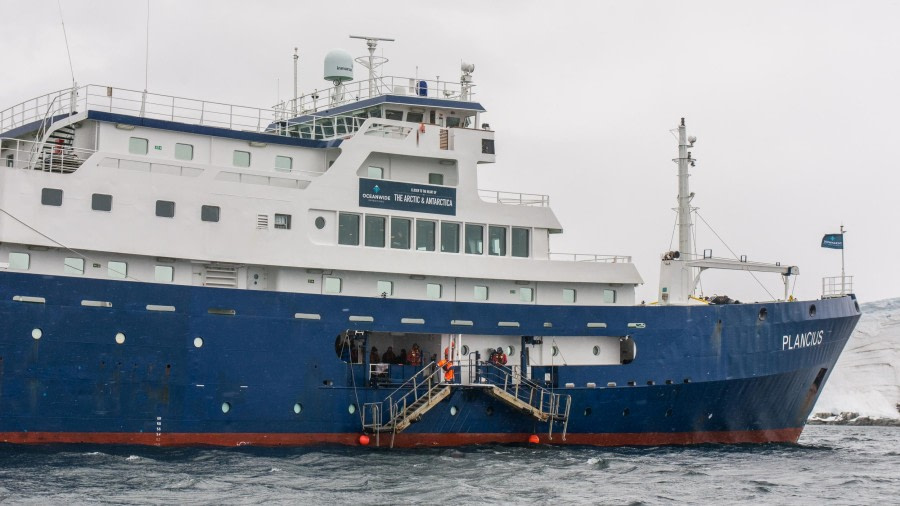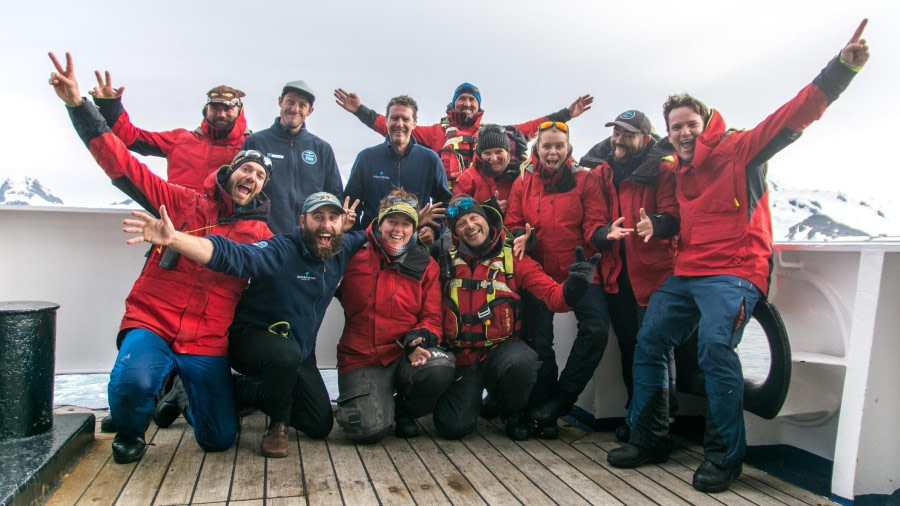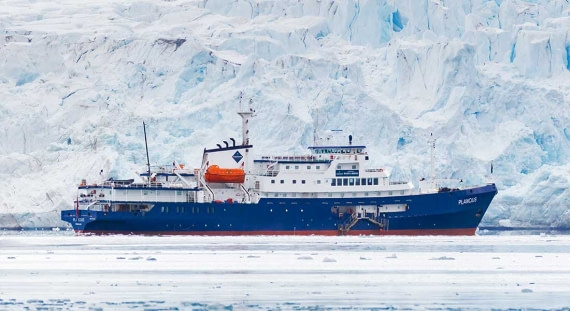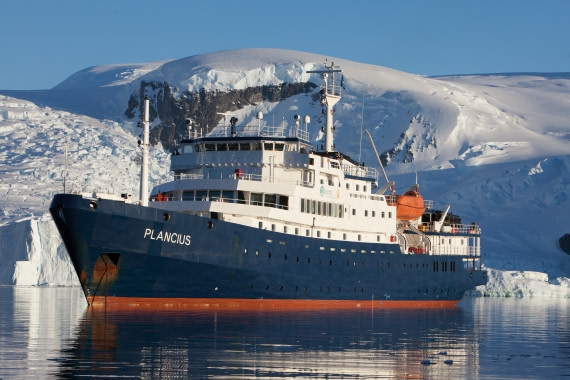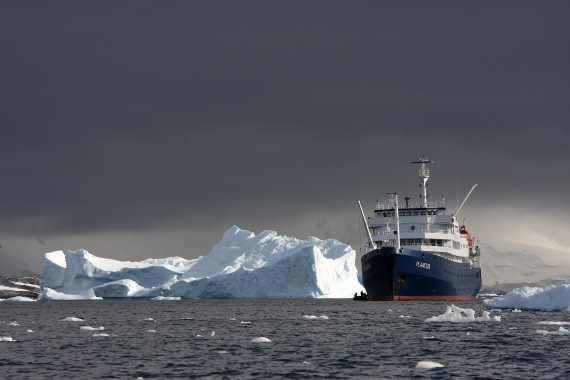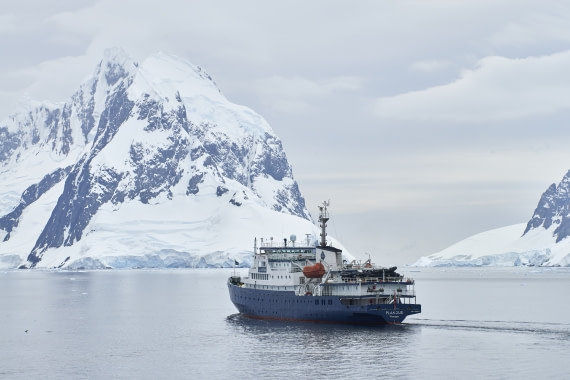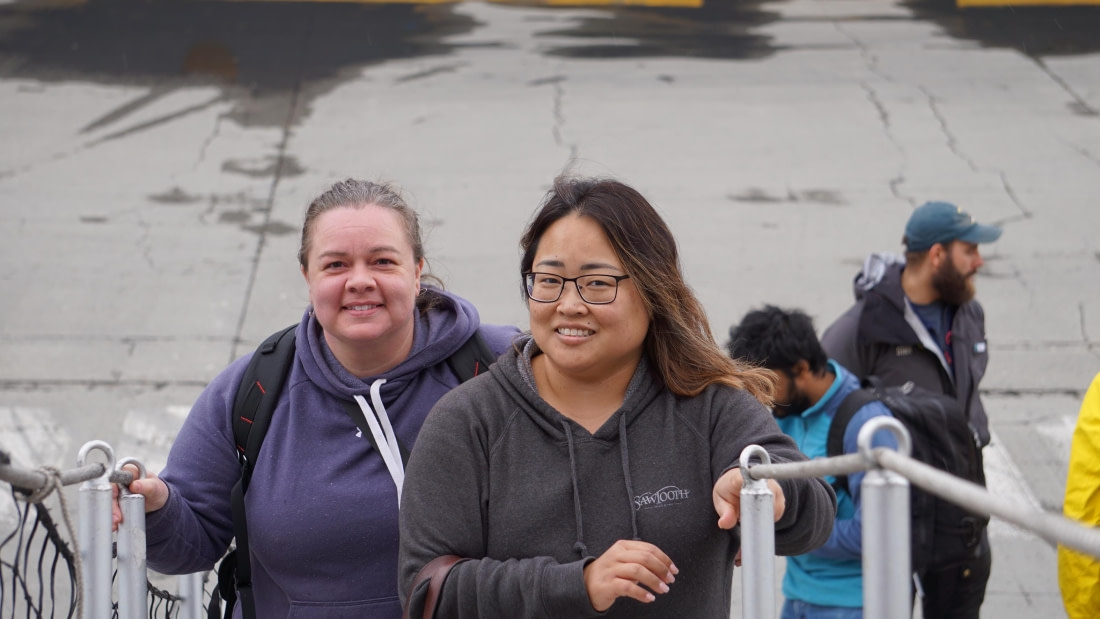| Datum: |
09.01.2024 |
| Positie: |
65°10,4'S / 64°02,4'W |
| Wind: |
NE 3 |
| Weer: |
Duidelijk |
| Luchttemperatuur: |
+5 |
S Ochtends waren we al vroeg aan dek omdat de kapitein het schip door de beroemde engten van het Lemaire-kanaal zou sturen. Net voordat de kapitein het kanaal kon binnenvaren werden we tegengehouden door een kleine groep Zwaardwalvissen, het leek alsof ze de ingang bewaakten. Na een tijdje kregen we toestemming en de kapitein navigeerde de Plancius met grote vaardigheid door de engten. Het landschap was adembenemend, een hoog Alpenlandschap op zeeniveau met overal gletsjers. Het was een zeer zonnig begin van de dag en het weer bleek ook de rest van de ochtend geweldig te zijn.
Na weer een heerlijk ontbijt bracht het expeditieteam ons aan land op Peterman eiland. Op het eiland konden we een Adéliepinguïnen kolonie bezoeken en onze benen strekken naar de top. De Adelies hadden een aantal pas uitgekomen kuikens die comfortabel weggestopt zaten onder de buik van hun ouders.
Vlakbij het Argentijnse stationsgebouw lag een groep zeeolifanten die we konden benaderen. We konden het rustgedrag van deze reuzen goed observeren, ze lagen heel ontspannen te gapen en te krabben, hun voedsel te verteren en hun losse vacht kwijt te raken.
In de namiddag maakten we een zodiac cruise op een zogenaamd ijsbergkerkhof rond Planeau eiland. Het weer was fantastisch en we keken met verbazing toe hoe de natuur de brokken ijs in allerlei fantastische vormen had gebeeldhouwd. Het licht speelde met de vormen en zorgde voor een schouwspel van kleuren. In het ijs kwamen we Vaal Stormvogeltje's en Wedelrobben tegen, echt een spectaculaire middag.
S Avonds hadden we een recapitulatie en een snel diner voordat de tweede groep kampeerders werd afgezet op een site genaamd Hovgaard. Aanvankelijk was het een beetje winderig, maar toen de zon achter de horizon zakte, nam de lokale wind af en hadden de kampeerders een geweldige nacht met een spectaculair landschap. De brug hield een grote ijsberg in de gaten die naar de ingang van het Lemaire-kanaal dreef, maar gelukkig blokkeerde hij de ingang niet tijdens de nacht.
BERGBEKLIMMEN
Locatie: Hovgaard Eiland, Straat van Penola
Ongerept weer en ongerepte sneeuw zorgden voor een majestueuze beklimming van Hovgaard Island, met een top van 369 meter boven zeeniveau. Een heldere hemel zorgde voor verre uitzichten naar het zuiden, langs de Vernadsky-eilanden en verder. Sommige van de meer avontuurlijke teamleden maakten zelfs van de gelegenheid gebruik om een paar gletsjerspleten te verkennen!
KAJAKKEN
Locatie: Petermann eiland, Straat van Penola
De zee leek wel van glas! Rustiger kon niet. Met de bergen weerspiegeld in het spiegelgladde water klommen we in de kajaks en begonnen we aan onze tocht. Het plan was om de hele lengte van Peterman N naar S te varen en dan de baai in te gaan om te kijken of we een walvis konden vinden.
Terwijl we langs de kust peddelden werden we opgewacht door een kleine bende Antarctische Aalscholvers, die duidelijk nieuwsgierig naar ons kajakkers kwamen kijken. Nadat hun nieuwsgierigheid was bevredigd, vlogen ze weg en gingen we verder naar de pinguïnbroederij.
Er waren veel Adele-pinguïns die in het water raasden, van de rotsen te water gingen en landden en we hadden een prachtig uitzicht op de kuikens van de Magelhaenaalscholveren bovenop de kliffen. Verderop vonden we een kleine wedelrob bij de hut en verschillende grote wedelrobben die op de sneeuw lagen op de eilanden ten zuiden van Petermann.
We eindigden onze reis door naar buiten en tussen de enorme ijsbergen door te peddelen. Eén ijsboog torende boven alle andere uit. Een verleidelijk avontuur, maar deze ijsbergen zijn niet te vertrouwen.
Locatie: Pleneau eiland, Salpétriere baai
Met zulke perfecte omstandigheden was de beste expeditiebeslissing die we konden nemen, de geannuleerde havenkajakkers van Orne uitnodigen om mee te spelen, naast het oorspronkelijke ingeschreven team. Erin had dus het genoegen om vanmiddag twee teams te leiden. De eerste peddelde vanuit het Lemaire-kanaal door het ruwe ijs naar het Iceberg-kerkhof. Deze enorme bergen geven je echt het gevoel dat je klein bent! Een gigantische toren markeerde het midden van het ijsbergkerkhof, een Vaal Stormvogeltje lag te zonnen op een ijsberg vlakbij. We gingen verder door het doolhof en kwamen uit in een diep kanaal waar we een Krabbeneter vonden, drijvend op een kleine berg. We ontmoetten George die een zodiac vol kajakkers had die aan het varen waren.
We wisselden wat magie uit en 'hey presto' het tweede team kajaks bevond zich nu op het water. Dit team zou terug peddelen over het kanaal naar het kerkhof. De wind was nu aangewakkerd en er hing een beetje meer kou in de lucht. We vonden de enorme toren en gebruikten hem als navigatiemarkering om terug te keren naar het schip. "Geef hem een ruime ligplaats jongens" Terwijl we rond de rand van de baai van de grote berg voeren, sneed een jacht onder de gigantische bergtoren door. KRAK! Uh-oh! Gezicht naar de golf, dat is de tactiek. Het jacht kwam heel dicht bij de berg toen die afbrokkelde en had het bijna gemist. Geluksboot. Maar de golf zou ons zeker uitdagen. CRACK! Uh-oh. De hele toren viel in het water. "PADDLE GUYS!" dit was een golf die we moesten proberen te vermijden. We vonden dekking bij een ijsberg en surften op de enorme golven om te ontsnappen. Dat wordt een leuk verhaal voor thuis.
CAMPING
Locatie: Hovgaard eiland, Straat van Penola
Na een fantastische zodiac cruise in de namiddag rond de Planeau- en Booth-eilanden, bleef M/V Plancius op haar positie midden in de Penola Strait tussen ijsbergen met tabular, pinnacle en drydock. Het weer was uitstekend zoals het de hele dag was geweest; een heldere hemel en winderige lucht. Kort na het diner brachten onze zodiacbestuurders ons naar de oostelijke oever van het eiland Hovgaard. We verzamelden onze schoppen en begonnen met het regelen van onze sneeuwkuilen voor de nacht.
Aan de overkant van de baai had je uitzicht op de steile pieken van Booth eiland verlicht door het warme gele licht van een lange Antarctische zonsondergang, terwijl een paar Weddellzeehonden in de buurt lagen te rusten en een paar Ezelspinguïnen de kustlijn bezochten. Dit was onze speciale setting voor onze eerste en gedenkwaardige overnachting op het Witte Continent. Zeker een ervaring om te onthouden!
